The Decked Canoe Archives
Assembled by Tim Gittins
The Past and Future of American Canoeing
1880-1900
By W.P. Stephens (?). Originally printed in "Forest and Stream", January 6, 1900, page 17-8.
The National Canoe Congress.
The following is a call issued by leading American canoeists:
A general convention of canoeists will be held at Caldwell, Warren county, N. Y. - head of Lake George - Aug. 3, 4, 5 and 6, 1880, at which it is proposed to perfect the organization of a national canoe club, of which local clubs now existing will be branches, and to take such further action in the interests of the pastime as may be deemed expedient.
Sailing and paddling races will be arranged for each day, the conditions of which will be duly announced.
All canoeists are invited to attend, and as a preliminary measure are requested - whether owning canoes or not - to send their names to N. H. Bishop, Esq., Lake George, Warren county, N Y., indicating their willingness to join the National Club; annual dues to be nominal.
Membership will carry with it the right to fly the National Club signals; will secure the temporary use of boat houses belonging to enrolled clubs, and will entitle the member to one copy of club publications. There are several excellent hotels at Caldwell, and camping places will be secured for all who desire them.
Invitations will be extended to English and Canadian canoeists to attend, with their canoes, as guests and assurances have been received that they will be well represented.
Your active co-operation is earnestly desired. You are particularly requested to send the addresses of all canoeists in your vicinity to Mr. Bishop, and to invite their co-operation.
Your suggestions as to the course to be pursued will be of service.
C. L. Norton, commodore of the N. Y. C. C., 849 Broadway. New York.
C. E. Chase, commodore of the Jersey City C. C , 287 Broadway. New
York.
Nicholas Longworth, commodore of the Cincinnati C. C.,
Cincinnati.
0. W. L. Alden, Isaac F. West, William Whitlock, New
York.
G. Livingston Morse, John Habberton, Richard L. Neville, New
York.
Kingman N. Putnam, Robert J. Wilkin, New York.
Robert D.
Wyncoop, E. A. Ransom, Karl F. Bergman, Jersey City,
N. J. Marcus L.
Higginbotham, Jersey City,
N. J. W. Harry Potts, Trenton,
N. J.
William J. Gardner, Newark,
N. J. W. P. Stephens, Rahway,
N. J.
Charles A. Cressy, Landaff,
N. H. Luclen Wulsin, W. M. Greenwood,
Cincinnati,
O. J. M. Barnes, Louisville, Ky.
A. H. Siegfried, St.
Paul, Minn.
Lake George is thirty-four miles long, and from one to four miles wide, with wild, mountainous shores, which the painter, the novelist and the historian have so vividly portrayed. From the south the lake is reached from Albany by the Rensselaer & Saratoga R. R. to Glens Falls; and from that town by plank stage road nine miles to Caldwell. Lake Champlain is connected with the northern end of Lake George by a portage less than two miles long.
Nathaniel H. Bishop, Sec'y pro tem.
The above was written by Mr. N. H. Bishop, in the study in the third story of his cottage up on the hillside near Caldwell, overlooking the lake, and was set up and printed by him on the small hand press that formed part of the furniture of that interesting sanctum, with its library of nautical books and its collection of souvenirs from the owner's many cruises. It was sent out early in the year 1880 to all canoeists whose addresses were known to Mr. Bishop. It represented the second stage of a task conceived and undertaken by him some two years before, of uniting all American canoeists. Mr. Bishop, who as a boy made a notable journey on foot across South America, a distance of 1,000 miles, was one of the first canoeists in the United States, making a cruise from Quebec to the Gulf of Mexico in 1874 in a paper canoe of the Nautilus model, and another long cruise from Pittsburg down the Mississippi and through the Gulf to Cedar Keys, Fla., in a sneak box, in 1875-76. After this he settled down to spend his summers in a beautiful home on Lake George, at that time one of the favorite cruising grounds of canoeists. In all of his travels Mr. Bishop devoted much of his time to the study of the geography and natural history of the regions through which he passed, and, like the father of canoeing, Capt. John MacGregor, he was a firm believer in the canoe as a special instrument for the close and accurate study of a country. While a believer in the canoe as a mere means of recreation and healthy sport, he at the same time rated it much higher in the scale of practical utility.
During the summer of 1879 there were a number of canoes on Lake George. Some members of the New York C. C., established in 1870, were cruising through the lake; some were spending the summer on the lake at the different hotels, and had their canoes with them. The late Judge Nicholas Longworth, of Cincinnati, then a regular visitor at the lake, was also a canoeist, as were several of his associates. As a consequence of this impromptu gathering of canoeists, there were cruises, and much talk of canoeing, and some races were held, prizes being contributed by some of the visitors at the hotels. En-couraged by the growing interest in canoeing, Mr. Bishop. who was at the time free from business calls, set to work during the fall to perfect the organization of his proposed national club. The work - and it involved a great deal of labor - was done entirely without aid, those whose names were appended to the circular approving and indorsing the plan, but doing little or no active work to further it. After a couple of years of correspondence witli the leading canoeists in Engl�ind, Scotland, Canada and the United States, the general details of the proposed organization were formulated and the aid of canoeists was invited in the circular.
The result of this work was in a measure disappointing, as but thirteen men were present on Aug. 3, when the first meeting was held and the American Canoe Association was formally organized. This number was increased to about twenty-five by canoeists who came in during the remaining days of the camp and took part in the races. Though small in numbers, the gathering was a representative and enthusiastic one, and when it broke up its members went in many directions, to spread the work of building up the A. C. A. For the first year Mr. Bishop continued as secretary-treasurer, he with Corn. Longworth buying the Three Sisters, a group of islands five miles from Caldwell, clearing them of underbrush and building a log house, the "Wigwam" of the Association; the second meet being held on these islands. As the Association gained in strength and membership he stepped aside and left its direction to the new men.
Canoeing as a recognized sport dates back to 1865-66, when Capt. John MacGregor made his first cruises in the original Rob Roys, small paddling canoes of 14 feet length, 26 inches beam and about 8 1/2 inches depth amidships. All the early canoeing was done in these miniature craft, in which the paddle was the main means of propulsion, the single sail being a mere handkerchief. The first important change from this model was made about 1870 by Mr. Warrington Baden-Powell, after several long cruises in the Rob Roy models, his new No. 2 Nautilus being 28 inches wide, 13 inches depth amidships, with a high sheer to the ends, rigged with mainsail, inizzen and jib, and fitted with a rudder and foot steering gear. This model was not only fitted for rough water, in which the Rob Roy would be unsafe as well as uncomfortable, but she could be sailed to advantage, though capable of being paddled with ease except against a strong wind. In the United States this early Nautilus model was introduced almost as early as the older Rob Roy, and soon became much more popular; most of the canoes of the new York C. C. (the first American club) were built from a design kindly sent by Mr. Baden-Powell to the founders of the club.
The ability of the canoe as a sailing craft being once demonstrated, a rapid development began in England, with a keen rivalry between Mr. Baden-Powell and another noted canoeist, Mr. E. B. Tredwen, both of the .Royal C. C. An improved Nautilus was soon followed by an equally improved Pearl, the two dividing the sailing prices of the club in the then numerous races on the Thames, and later on Hendon Lake. Under the influence of keen racing and local conditions (a narrow and winding river, with puffy winds over the trees and banks), a peculiar type of canoe was produced about 1880, with metal centerboards, lead ballast and very large sails - a craft unfitted for any use but match sailing on the Thames.
The majority of American canoes in 1880 were variations of the Nautilus type, 14 by 30 in dimensions, with moderate sheer and mainly fitted with shallow keels. In model, build and fittings they were all-round cruising craft, and most of them had made cruising records before doing much racing. Every canoe that came to camp carried her owner's tent, bed and camp outfit, and raced with her cruising rig. In 1881 the first open Canadian canoes were seen at an A. C. A. meet, manned by Messrs. Edwards and Rogers. From 1880 to 1886 the improvement of the canoe and her fitting was carried on rapidly at the hands of such men as Vaux, Gibson, Oliver, Bailey, Richards and other old-time cruisers and racers. The main end of all was to produce a perfect all-round canoe, in which, if time permitted, one miglit cruise to a meet and yet win both sailing and paddling prizes.
In 1886 two important innovations were introduced: Mr. E. H. Barney, of the Springfield C. C, an ardant racing man, brought out Pecowsic, a purely racing canoe, with a suit of five interchangeable standing sails; and Mr. Paul Butler, of the Vesper B. C., introduced the sliding seat. From this time on, the aim of canoeists was directed almost entirely to the construction ot faster sailing canoes, regardless of general use and paddling; the long well, in which the canoeist once slept in comparative comfort, was first. given up to a larger centerboard trunk, and then decked in completely until it became a mere "bucket." The small standing sails of Pecowsic were copied in others of great area, the deep drop rudder was introduced, with the thwartship tiller, and the sliding seat was lengthened until it became the most prominent feature of the canoe. With these changes came a cutting away of the model and a reduction of the planking, that further unfitted the canoe for other than match sailing.
The meet of 1890, the first salt-water meet, at Jessup's Neck, marked the end of another period in canoe design, in which, from 1886, the racing features preponderated in canoes that were still of fairly good model and strong construction. From that time to the present has been the era of the racing machine, the hull being whittled down to the smallest possible displacement and freeboard, the construction being cut to the last limit and the fittings including only a large centerboard, rudder and sliding seat and the sails. As matters are to-day, the sailing canoe is fit only for match racing, and such racing is dead. At the same time, the perfection of the sailing machine has driven out entirely the old all-round cruising and racing canoe. Those who follow any other branch of the sport but racing do so in the open Canadian canoe, of which thousands are in use.
Apart from the canoe proper, fitted for one man and capable of being sailed, paddled or handled on shore by him alone, canoeing has produced various larger craft of the same general type, classed as canoe-yawls and canoe-yachts. The former term is applied to such large canoes as, through their light draft and absence of fixed ballast and outside keel, can be hauled up or housed; the latter to those with fixed ballast and deep keels, so that they must always be kept afloat. All are single-handers in that they may be readily sailed by one man and at the same time they will accommodate two or more in cruising. Paddling or even rowing is out of the question except with the smaller canoe-yawls. These larger craft have found favor with many who began as canoeists, as well as with other new recruits, who prized the freedom and independence of canoeing and yet wished for something abler, drier and more comfortable than the 30-inch canoe. Where the waters permit and land transit is not an object, the advantages of the canoe-yawl are indisputable. Though the maximum limit of beam for a "canoe" in this country is still 30 inches, as it has always been, many good craft have been built and used with a breadth of from 3 to 4 feet, according to their other dimensions.
The day of the heavy displacement English canoes Pearl and Nautilus ended in 1886, when the two latest models of these renowned types visited the United States, Mr. Baden-Powell bringing his Nautilus and Mr. Walter Stewart a new Pearl - both sailed from below deck and heavily ballasted. After being decisively defeated by the light American canoes Vesper and Pecowsic at the meet at Grindstone Island, they were beaten by the New York C. C. boats on New York Bay, though their owners abandoned the below-deck position and sailed them from the deck. This experience led to the introduction of light displacement canoes with many American fittings in England, and also resulted in the production of a new type of sharpie canoe, with flat floor and straight sides, sailed without ballast. For some years following 1890 canoeing and canoe racing were in a very depressed state in England, but within a few years there has been a marked revival. At the present time the bulk of the racing, of which there has been a good deal on the Thames, is done in canoes of the cruising class, which are limited to 16 feet over all and 42 inches beam, with 6 inches minimum draft, 9 inches minimum freeboard, 8 inches minimum sheer at bow and 6 inches at stern, and a minimum length of well of 7 feet, of which 3 feet 6 inches is clear of the centerboard trunk. There must be two water-tight bulkheads, but an underbody rudder is allowed. While these limitations make a very good craft, she is much larger than the old canoe, and really a canoe-yawl. It is not apparent that the revival in racing in England, so far as it has progressed, is due to the admission of wider canoes any more than to general causes.
The condition of American canoeing at the present time, as for several years past, is a peculiar one, and at the same time one which must be altered, if the sport is to prosper. There are many canoeists throughout the country, a large number of canoe clubs, most of them settled in good houses and fairly prosperous in a financial way, and there are many canoes in use. At the same time there is practically no racing and no designing nor building of new craft. Much of the canoeing is done in the open canoe, usually the Canadian model, an excellent craft for afternoon paddling and similar work as well as for hunting and fishing. With the exception of a few extreme racing machines, the decked canoe, the craft which gave birth to canoeing and made it what it once was, has disappeared. As to the racing machines, they are not sufficiently numerous of themselves to make good racing, and yet they serve to bar all better types.
The question which we should like to bring to the attention of all canoeists in the Association is that of the type of canoe that is needed to-day to revive canoeing. Can anything be done to encourage the use of the racing machine under the present rules, to induce men to build and race new canoes of the type of Mab and her kind? Is it possible to produce a new type of 16 by 30 all-round canoe of stanch construction and of such size and arrangement as to be generally useful, and yet to be capable of racing? Is it desirable in any class of canoe to limit the construction of hull and the length of sliding seat? Is it possible to follow the English plan and design a larger, wider and abler craft that will become generally popular as the old 30-inch canoe was in 1880?
There have been various evidences of late of a revival in canoeing. The outlook for the Association and for the next camp is most promising in many ways, and there is a revival of interest in many of the clubs that have long been inactive. In our opinion, if anything is to be done to ulilize these favorable conditions to the permanent revival of the sport, it must be through the introduction of some one type of decked sailing canoe which shall appeal as forcibly to the majority of canoeists as the old Rob Roy did in the sixties, the Nautilus in the seventies and the new American models in the eighties. The question is one which concerns all canoeists, and we shall be glad to hear from them by way of discussion and suggestion. There should still be sufficient technical skill among canoeists to produce the right craft if some unanimous decision can only be reached as to what its characteristics shall be.
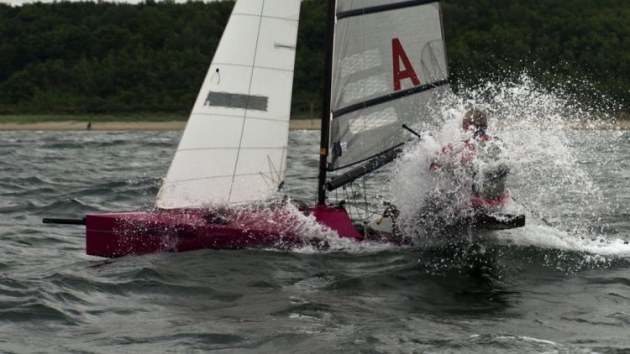
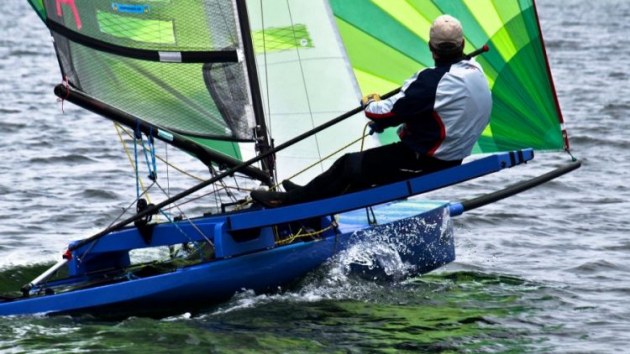
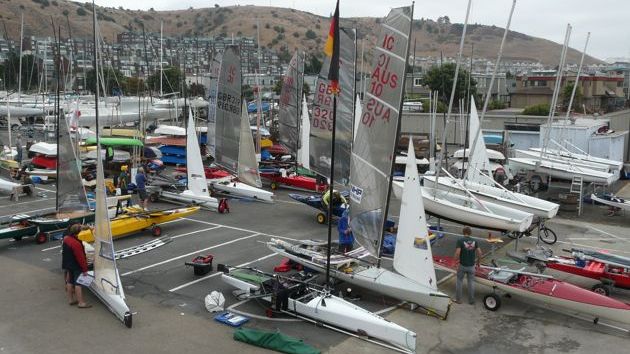
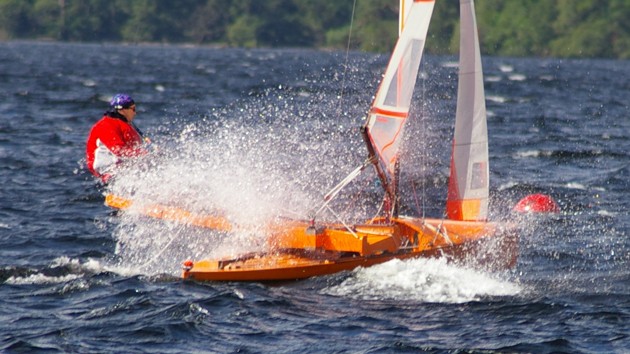
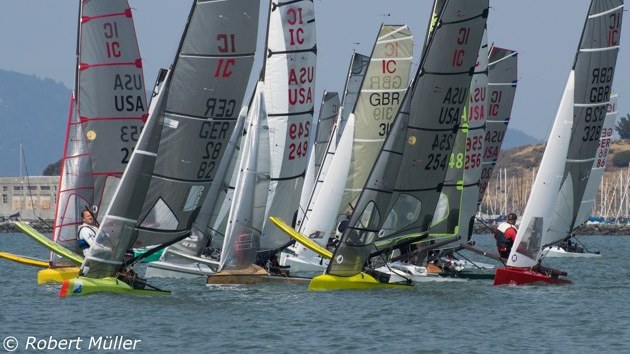



Ulrike_veerkamp.jpg)
Ulrike_veerkamp.jpg)

Ulrike_veerkamp.jpg)

Ulrike_veerkamp.jpg)
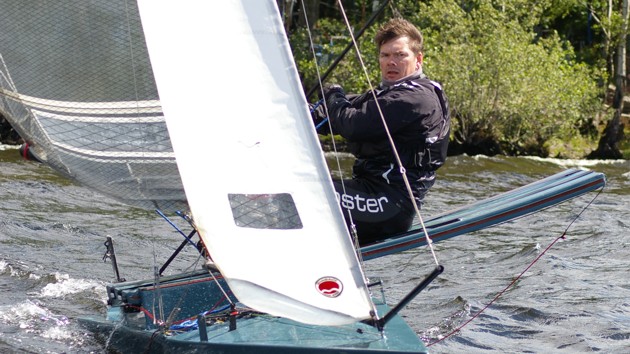
Ulrike_veerkamp.jpg)